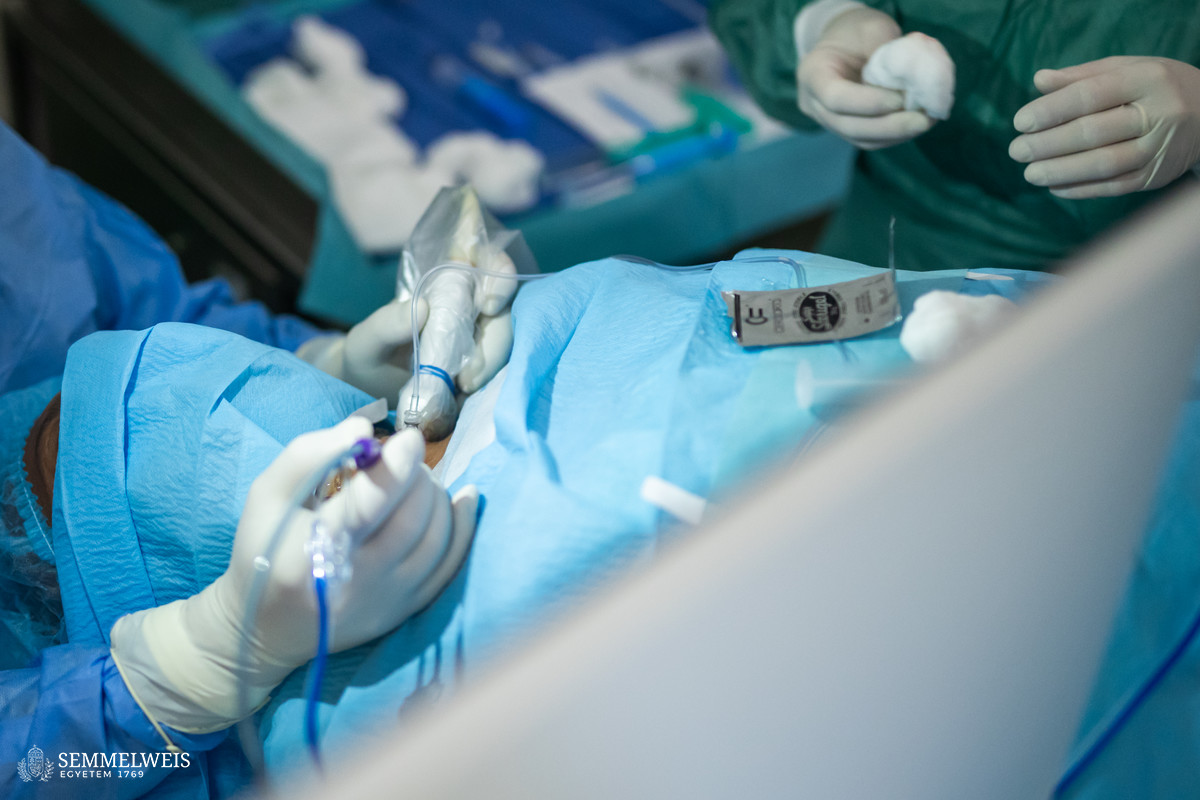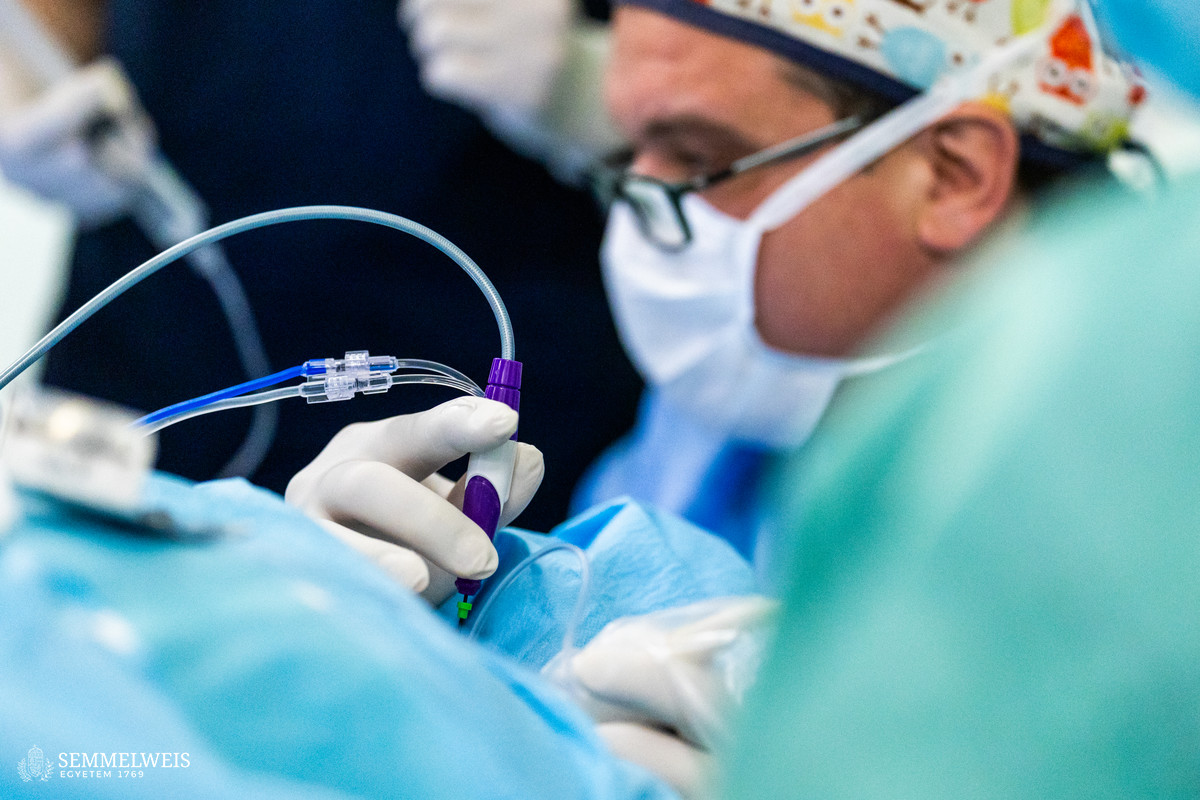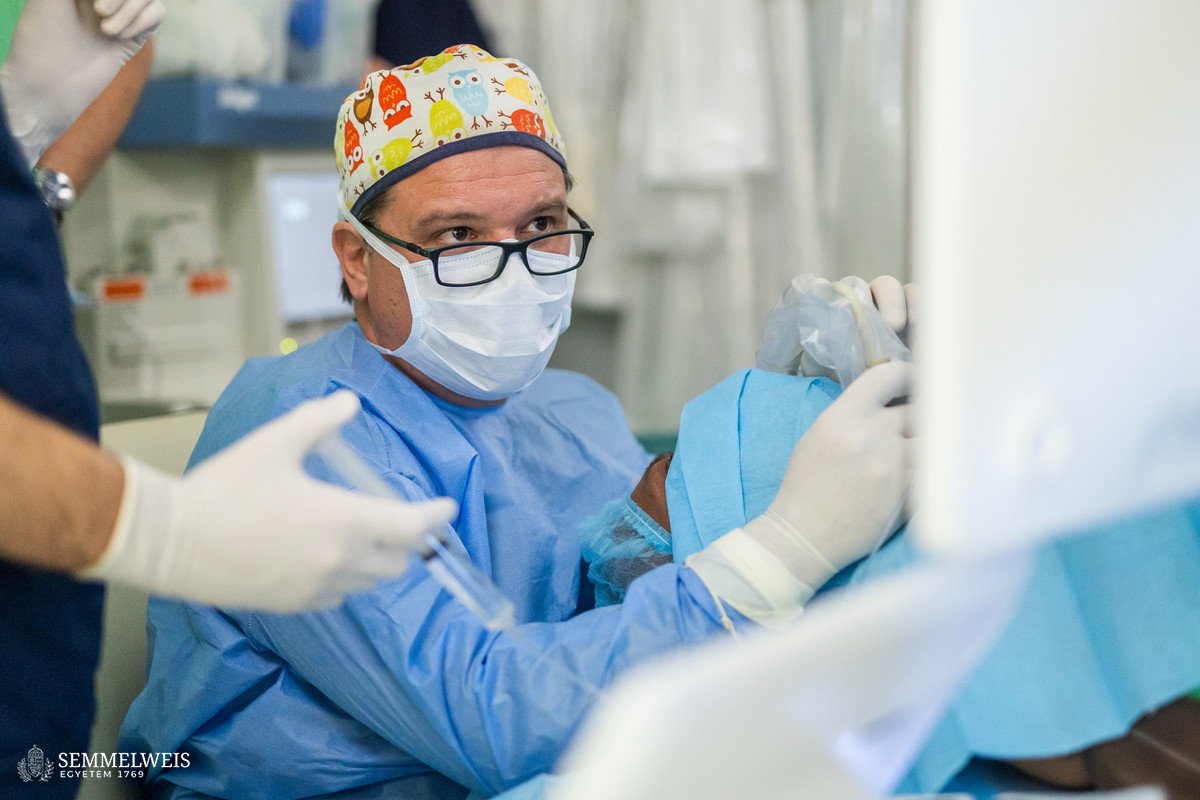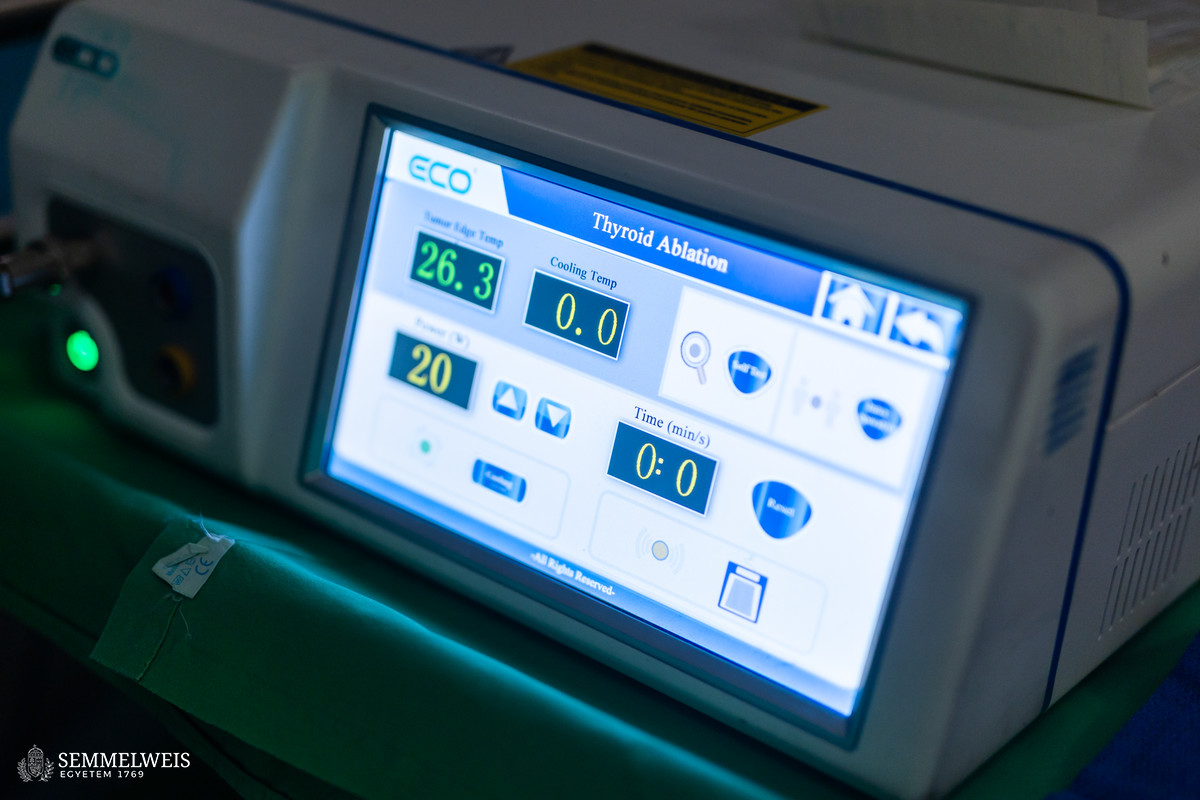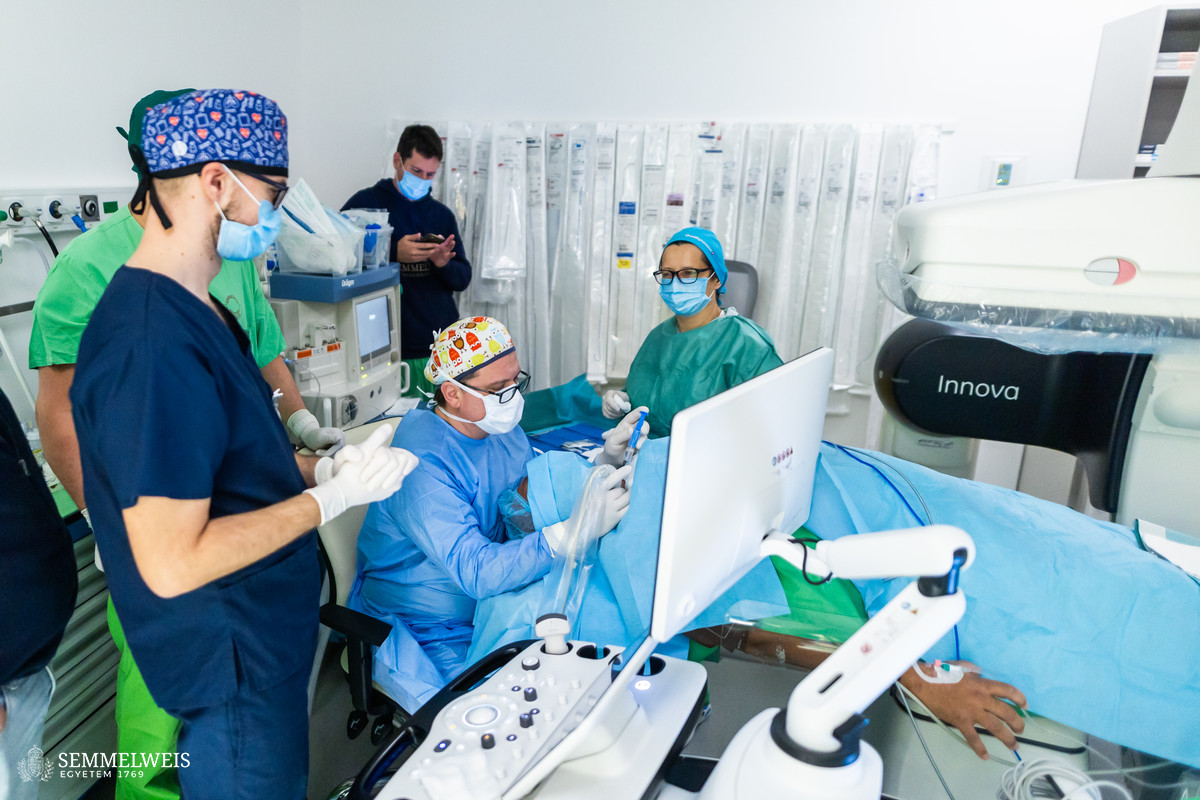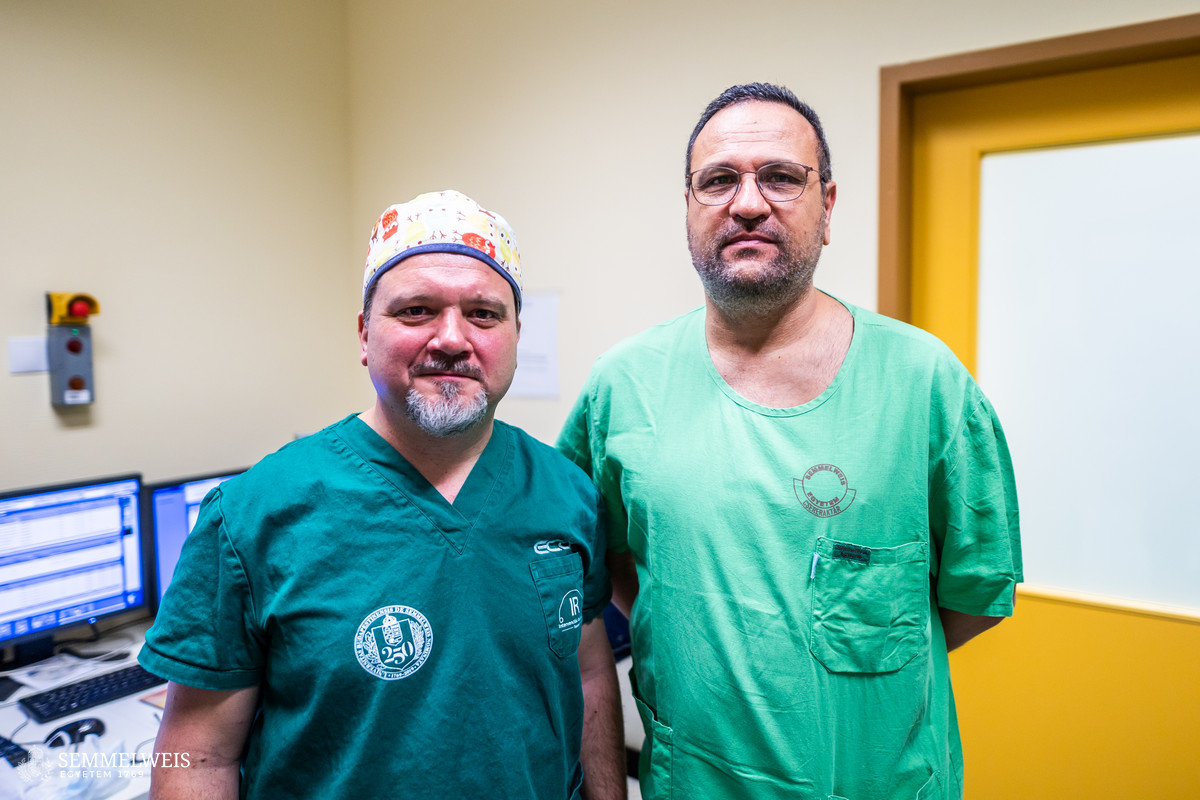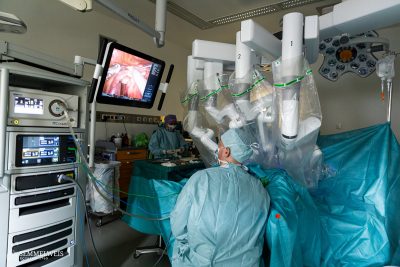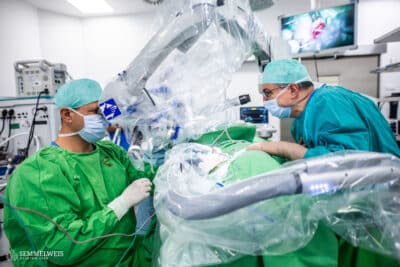Two men on dialysis and a woman with benign parathyroid enlargement were the first to receive parathyroid thermoablation treatment in the Onco-Interventional Unit of Semmelweis University’s Heart and Vascular Centre at Városmajor, with social security funding and an individual fairness claim.
“During the procedure, we treat the patient through an incision the size of a pinprick. We insert a needle into the lesion that uses microwaves to heat up the surrounding tissue. This heat causes the proteins that build up tumour cells to precipitate; the procedure also cuts off the tumour’s blood supply and dead tumour tissue is broken down by the body. “The procedure is technically challenging, as we need to separate the tissues properly with fluid beforehand to protect the trachea, esophagus and vocal cord nerve, and avoid complications due to the heat,” says Dr. Pál Ákos Deák, Associate Professor, explaining the mechanism of thermoablation treatment. The head of the Onco-Interventional Unit added that liver, kidney, thyroid and bone tumours have already been treated this way at the institution, but this is the first time that parathyroid treatment has been offered not only in Hungary but also in Central and Eastern Europe. According to Dr. Deák’s knowledge, similar procedures are only carried out in Spain and Italy.
A very high resolution ultrasound machine is essential for the success of the procedure, so that the often deep lesions can be seen properly, and microwave equipment along with the right expertize are also needed.
Because lesions are difficult to examine and access, sometimes only a few millimetres in diameter, a very steady hand is needed to guide the needle into the right position and to do so safely
– explains the head of department.
Due to their underlying disease, affected patients require ongoing nephrological and/or endocrinological care, and if necessary, these specialists refer them to the Onco-Interventional Unit of Semmelweis University. In all cases, intervention is preceded by a thorough endocrinological examination, and the institution’s endocrinologists play an important role in the follow-up care.
The procedure can bring the desired result in just one session, but in some cases the problem may recur years later. The treatment can be repeated several times and the first operation does not compromise the second, unlike open surgery, where a second or even third operation on a previously operated neck can lead to a number of complications. The procedure can be performed even in patients who have undergone multiple open surgeries,” says Dr. Pál Ákos Deák.
The first three thermoablation treatments of benign parathyroid enlargement (adenoma) were performed in the Onco-Interventional Unit under the supervision of Dr. Bülent Cekic, a world-renowned expert in thyroid and parathyroid ablation from Turkey. Following the successful procedures, the fourth patient involved is now being investigated and an individual fairness claim is being submitted.
The disease called hyperparathyroidism – an overproduction of the parathyroid hormone – disrupts the body’s calcium and phosphate metabolism, and causes the enlargement of the parathyroid gland. In most cases, increased parathyroid function can be caused by a benign tumour (adenoma), an enlargement of the parathyroid gland or a malignant tumour. For the latter, head and neck surgery remains a therapeutic option. The disease is known to occur in both primary and secondary forms, and is very often secondary to renal failure, therefore more common in patients undergoing renal transplantation. Due to keeping those affected on the transplant list, it is very important that they receive appropriate treatment: the disease is often difficult to control with medication, but now this new intervention option is also available to correct the abnormalities that cause parathyroid hormone overproduction.
Orsolya Dávid
Translation: Viktória Kiss
Photo: Bálint Barta – Semmelweis University
